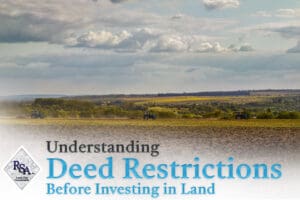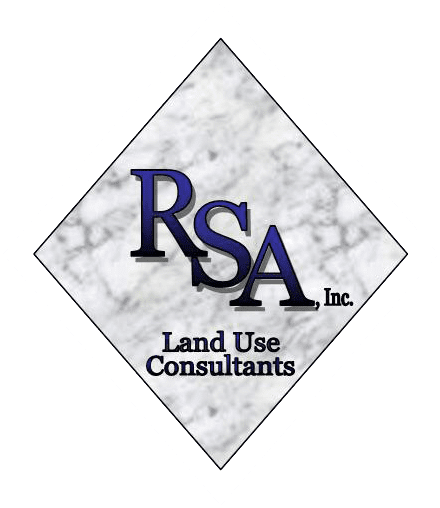 Investing in land can be an exciting opportunity—whether you’re considering it for personal use, business development, or long-term investment. But before you take the plunge and purchase a parcel, there’s one crucial step you should never overlook: understanding deed restrictions that may be tied to the property.
Investing in land can be an exciting opportunity—whether you’re considering it for personal use, business development, or long-term investment. But before you take the plunge and purchase a parcel, there’s one crucial step you should never overlook: understanding deed restrictions that may be tied to the property.
At Richard Stevens & Associates, we work with property owners and developers throughout Southern Oregon and Northern California to provide professional land use planning services. One of our essential roles is helping prospective land buyers understand how various land use provisions, including deed restrictions, may affect a property’s development potential. Deed restrictions can have significant implications from a land use planning perspective, and ignoring them can quickly derail a project.
What Are Deed Restrictions?
Deed restrictions (also known as restrictive covenants) are private agreements that limit the use of a parcel of land. They are attached to the property deed and transfer with the land when sold. Developers, homeowners’ associations (HOAs), or previous owners often implement these restrictions to maintain specific standards or uses in a subdivision or area.
From a land use planning standpoint, deed restrictions are unique because they are not created by public agencies, like cities or counties, but by private entities. This means they may be entirely separate from local zoning ordinances or comprehensive plans—but they can still significantly limit what you can do with the land.
Common Types of Deed Restrictions
Here are a few common types of deed restrictions that can impact land development:
-
Use restrictions: A parcel may be limited to residential use only, excluding commercial or agricultural activities.
-
Building limitations: Restrictions may limit the height, type, or number of structures you can build.
-
Minimum square footage: Some properties must have homes or buildings above a certain size.
-
Material or design standards: These may specify types of siding, roofing, fencing, or landscaping allowed.
-
Prohibition of certain activities: Restrictions might prohibit the use of land for raising livestock, short-term rentals, or even certain types of home businesses.
While these may seem minor at first glance, they can significantly impact your development goals. For example, if you’re looking to develop a small retreat center or hobby farm, a deed restriction that limits land use to single-family residential purposes could make that vision impossible.
Here are some examples of deed restrictions:
- Only one permanent single-family dwelling is allowed on the land.
- Guest or caretaker facilities are permitted if they are separate, permanent structures, including a garage, guest house, barn, or home office.
- Lots or parcels cannot be further subdivided.
- Dwellings must be conventional site-built construction with a minimum of 1,600 square feet of living area.
- Mobile homes, manufactured homes, modular homes, or trailers are not allowed.
Deed Restrictions vs. Zoning and Land Use Regulations
Zoning regulations and land use codes are public regulations established by local governments to control the development and use of land within their jurisdiction. These rules are created to promote public health, safety, and welfare and are usually found in city or county zoning codes, comprehensive plans, or land development ordinances.
By contrast, deed restrictions are private agreements. They may be more restrictive than zoning laws but are never less restrictive. For instance, even if local zoning allows duplexes or small-scale agriculture, a deed restriction could prohibit these uses.
From a planning perspective, this distinction is important because:
-
Deed restrictions are enforced privately (often by HOAs or individual property owners), not by local planning departments.
-
They do not appear on zoning maps or comprehensive plans, meaning they can be easily overlooked if you only look at public planning documents.
-
Planning approvals don’t override deed restrictions. Even if you receive a conditional use permit from a county or city, you could still be blocked from using the land as intended if it violates a deed restriction.
The Planning Pitfalls of Ignoring Deed Restrictions
Unfortunately, failing to research or understand deed restrictions can lead to project delays, increased costs, or even legal disputes. Some common pitfalls include:
-
Buying land for a use that’s not allowed: This is more common than many realize, especially in rural areas where zoning may be less restrictive, but private covenants are more common.
-
Investing in permits or plans before discovering restrictions: Time and money can be wasted on architectural design, surveys, and permit applications that ultimately don’t align with the restrictions on the deed.
-
Community opposition: If your intended use violates neighborhood deed restrictions, nearby property owners may take legal action or pressure local officials to halt your project.
-
Incompatibility with broader planning goals: In some cases, private restrictions may conflict with a community’s long-term goals, making it difficult to secure additional approvals or buy-in from stakeholders.
Before You Invest, Consult with Richard Stevens & Associates
Land purchases are significant investments—and as the saying goes, an ounce of prevention is worth a pound of cure. Before you commit to purchasing a parcel, especially one you plan to develop, take the time to investigate any deed restrictions thoroughly.
Richard Stevens & Associates can help you navigate deed restrictions from a planning and development standpoint. Here’s how we can support you:
-
Due diligence and document review: We assist clients in understanding which documents may contain deed restrictions, such as subdivision plats, CC&Rs (Covenants, Conditions, and Restrictions), and recorded agreements. While you’ll want to consult with a title company or attorney to verify them, we can help interpret how they may impact your project goals.
-
Compatibility assessment: We can evaluate whether your intended use aligns with both zoning requirements and any known deed restrictions, helping you identify risks early.
-
Land use planning strategy: If the property fits within your goals, we can develop a land use plan that considers all regulatory and private-use limitations, streamlining your path to development.
-
Coordination with local agencies: Our team is experienced in working with city and county planning departments.
-
Development alternatives: If your preferred use is not allowed due to restrictions, we can help brainstorm other viable options that meet your needs while staying within the deed’s parameters.
Understanding what you can and cannot do with the land is just as important as knowing the zoning designation. By partnering with Richard Stevens & Associates, you’ll gain the insights you need to make smart, informed decisions—and avoid unnecessary headaches down the road.
Contact us today if you’re considering a property in Southern Oregon or Northern California and want to understand how deed restrictions or other land use factors could affect your plans. We’re here to help guide your project from concept to completion—with clear, expert planning every step of the way.
